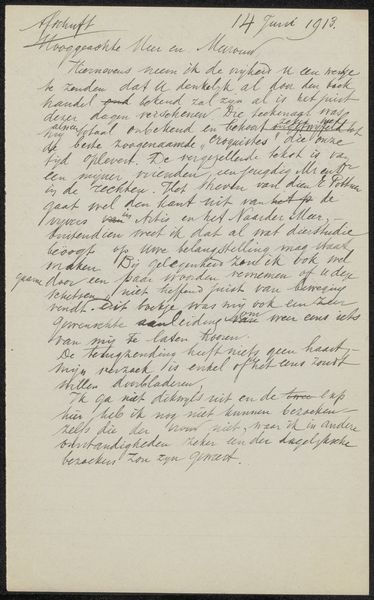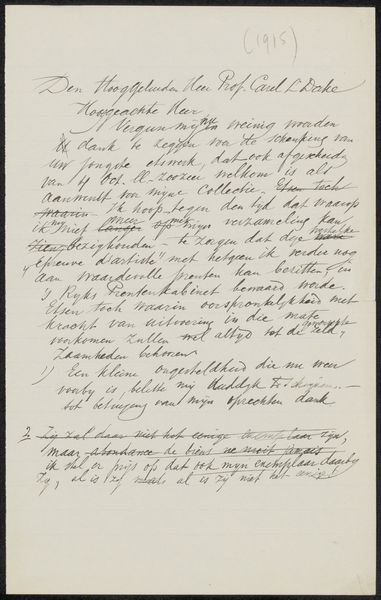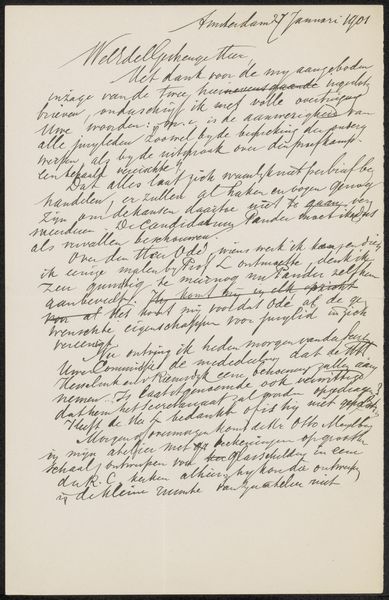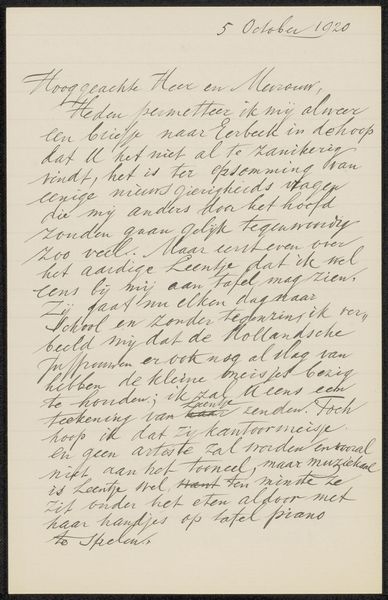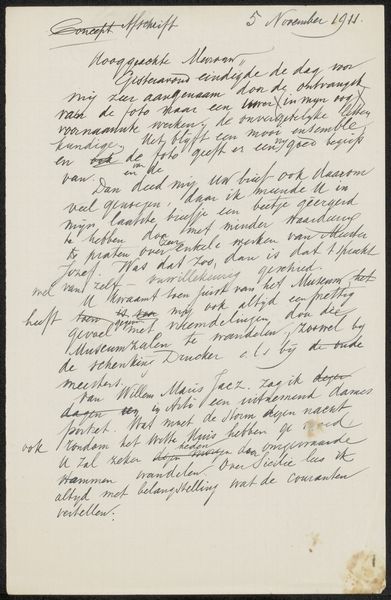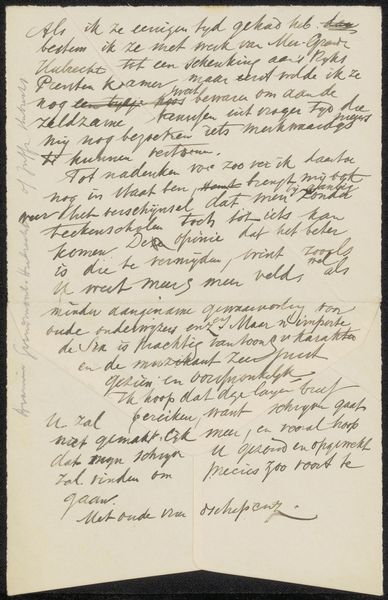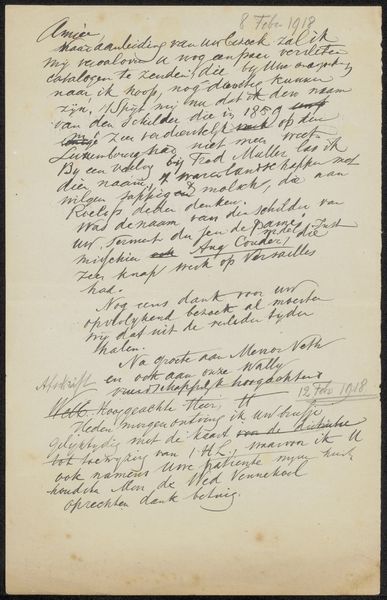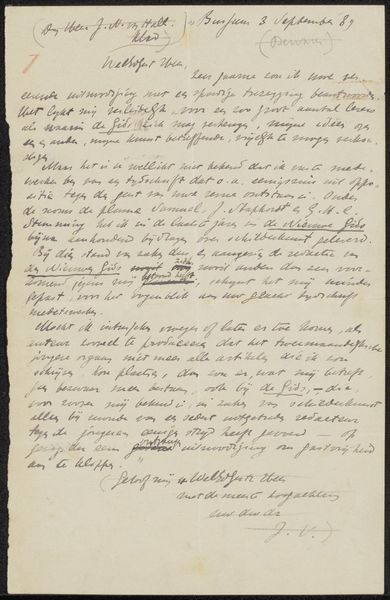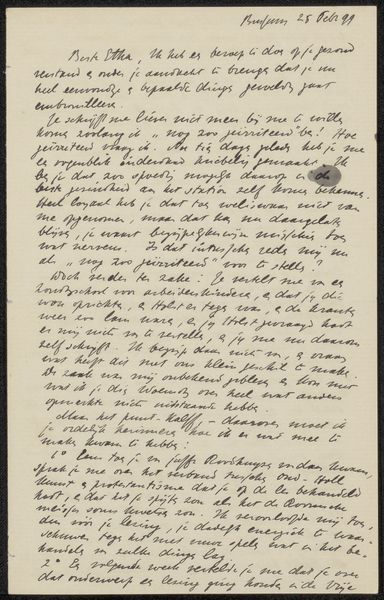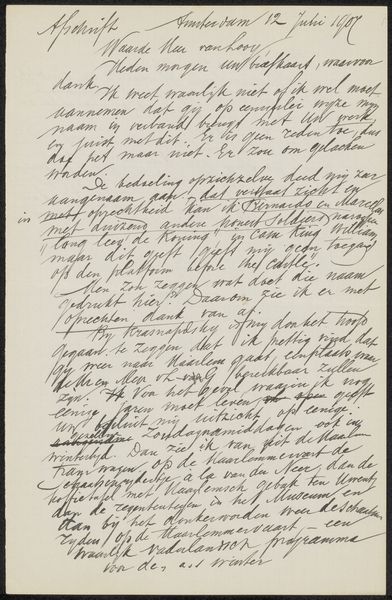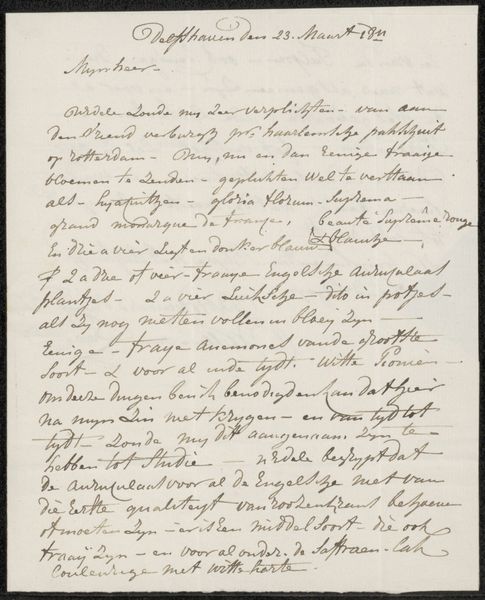
drawing, ink, pen
#
drawing
#
ink
#
pen
#
modernism
Copyright: Rijks Museum: Open Domain
Editor: Here we have "Brief aan anoniem," or "Letter to Anonymous," possibly from 1914, by August Allebé. It's an ink and pen drawing, and I have to say, there's something incredibly intimate and mysterious about reading what appears to be a personal letter rendered as a work of art. What catches your eye in this piece? Curator: It’s interesting that you use the word “intimate.” As a historian, I consider how this letter exists within the broader context of art institutions. This isn't just a personal note; it's in the Rijksmuseum, making it a public document. Editor: I see what you mean! I hadn’t really thought about it that way, more about the writing being made public. Curator: Precisely. We can explore who was considered important enough for their private correspondence to become a matter of public interest. Consider the time: possibly 1914, right before World War I fully engulfed Europe. How might the looming anxieties of war influence Allebé’s perception of the letter's message? Editor: That makes a lot of sense! So, you're saying it's not just about the individual letter itself, but also the historical context of the time that is important. I hadn’t considered the societal context. Curator: Exactly. And further, the very act of preserving such writing can tell us about how historical and artistic narratives are selectively assembled by museums and other institutions. We have to acknowledge our biases in determining which writings get spotlighted. Editor: So, it prompts us to ask, "Why this letter, and not others?" Fascinating. Curator: Precisely. It also highlights the politics of whose stories are being considered important. We shouldn’t consider what’s physically in front of us but why we find it interesting. Editor: I see. I've learned that considering art involves historical context as well as considering institutions and politics. Thanks so much.
Comments
No comments
Be the first to comment and join the conversation on the ultimate creative platform.
